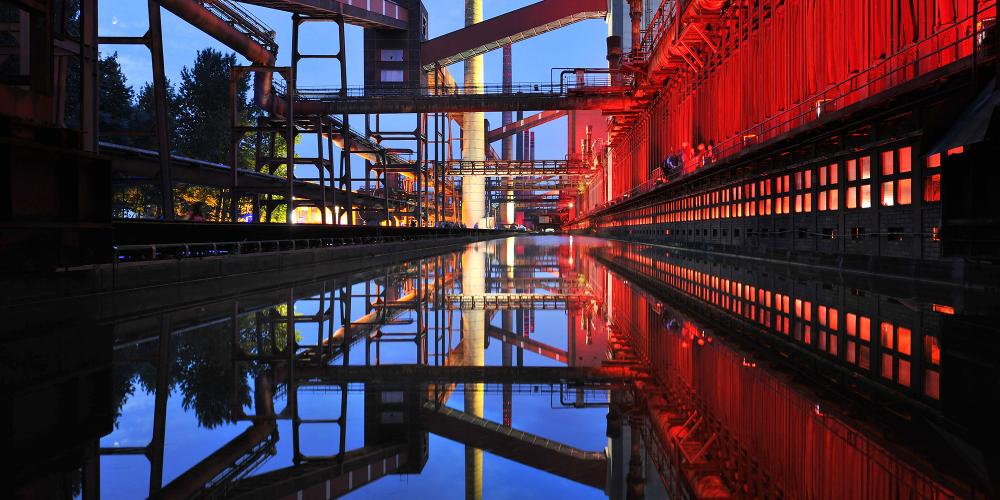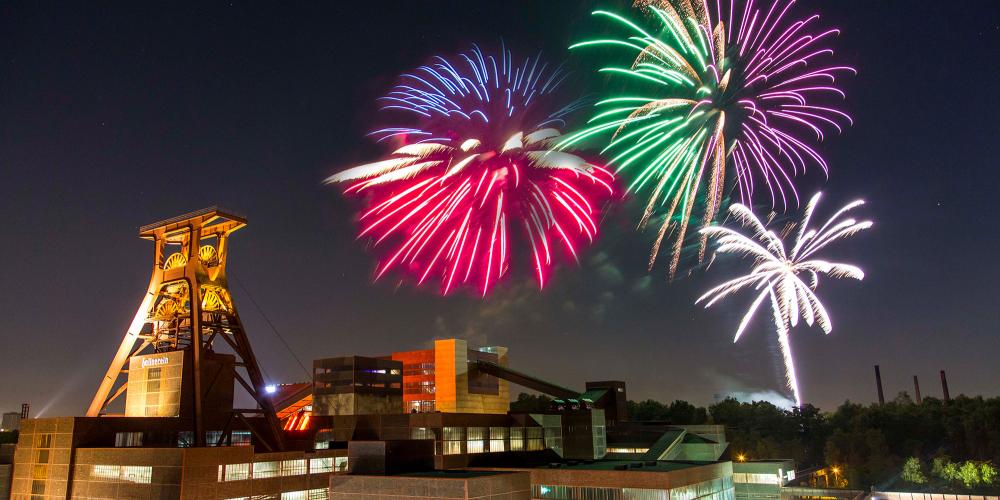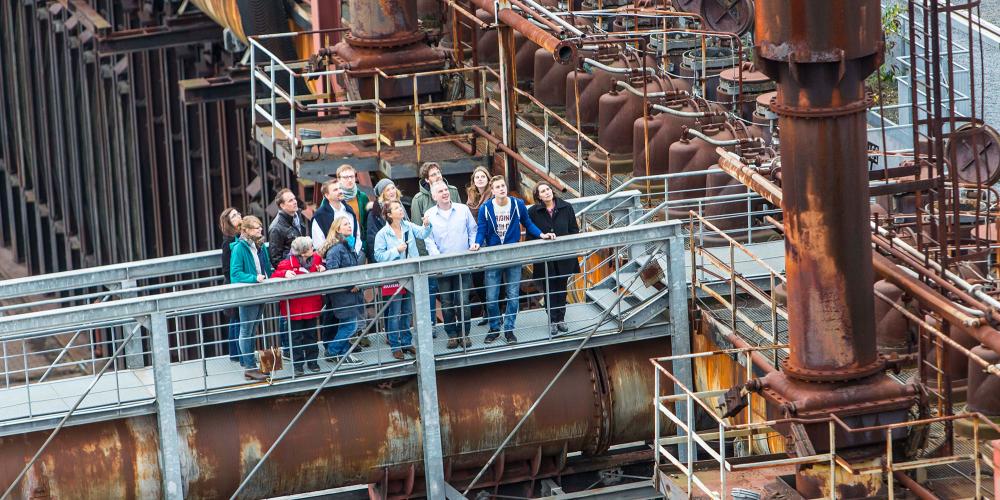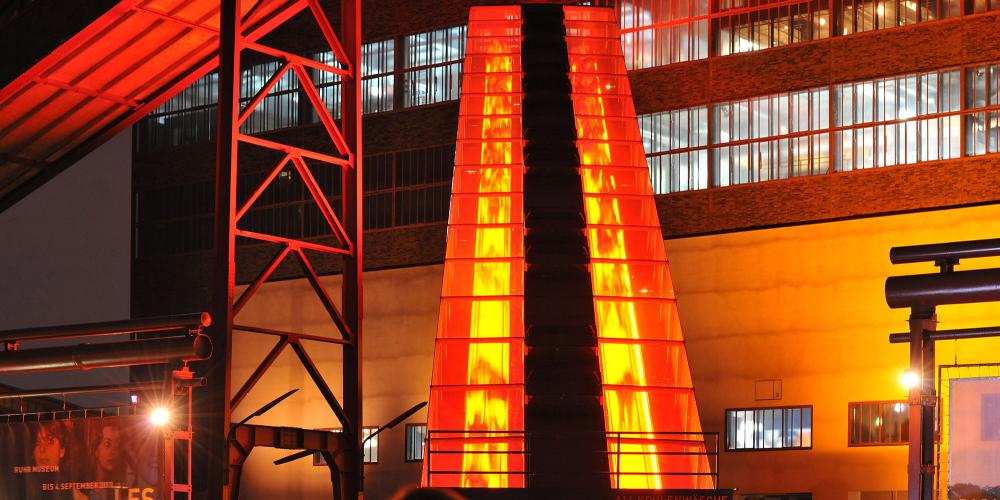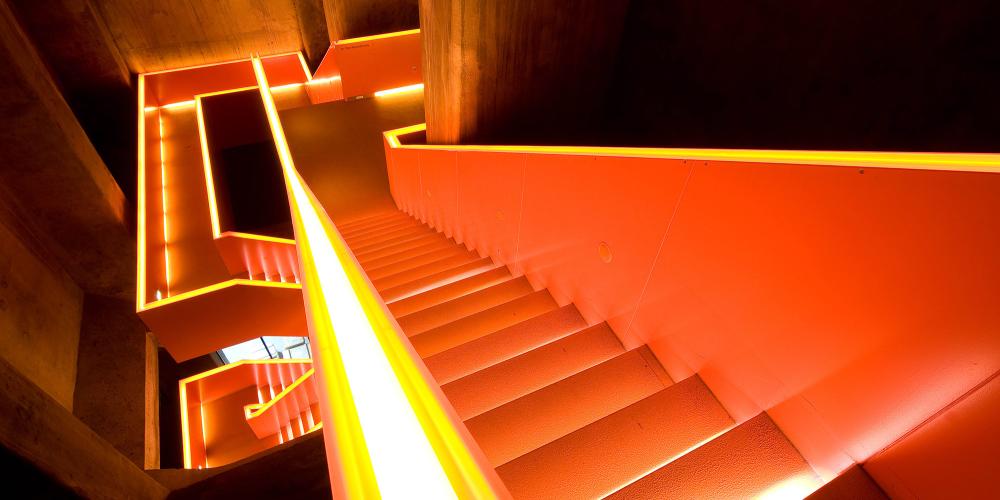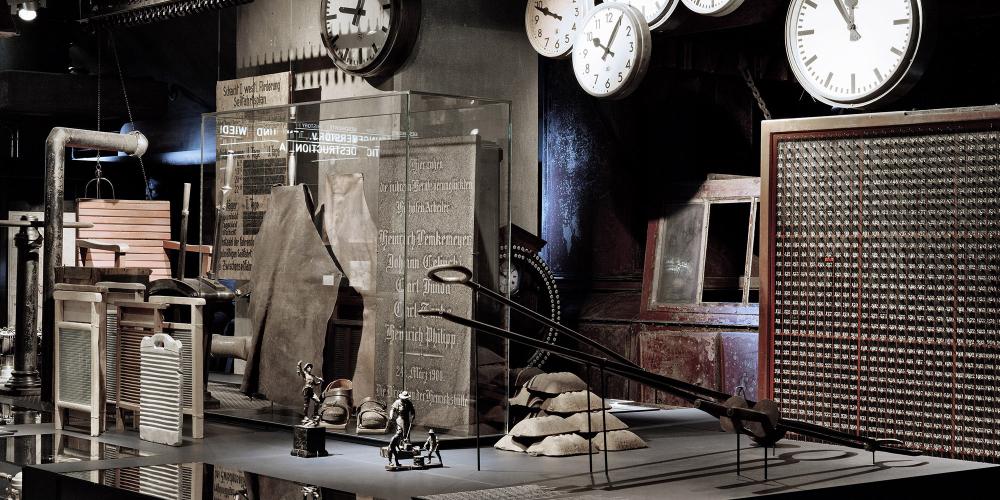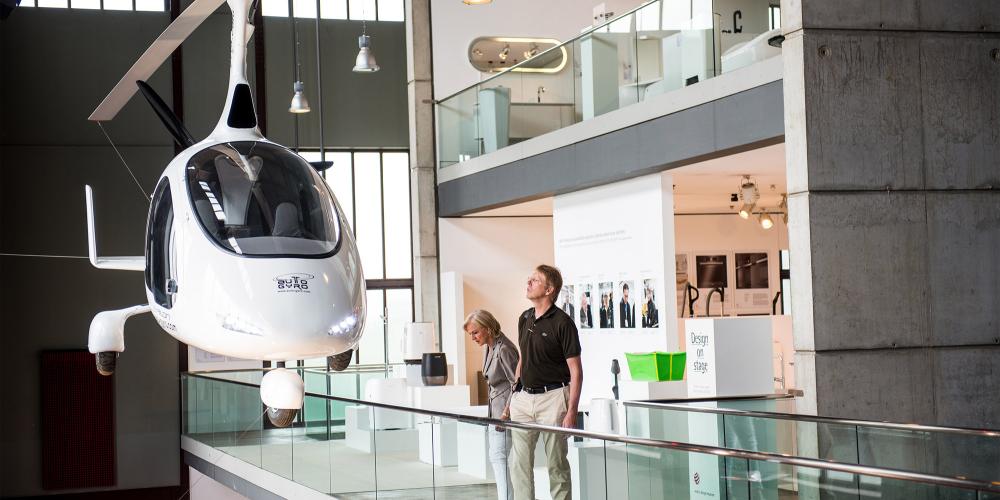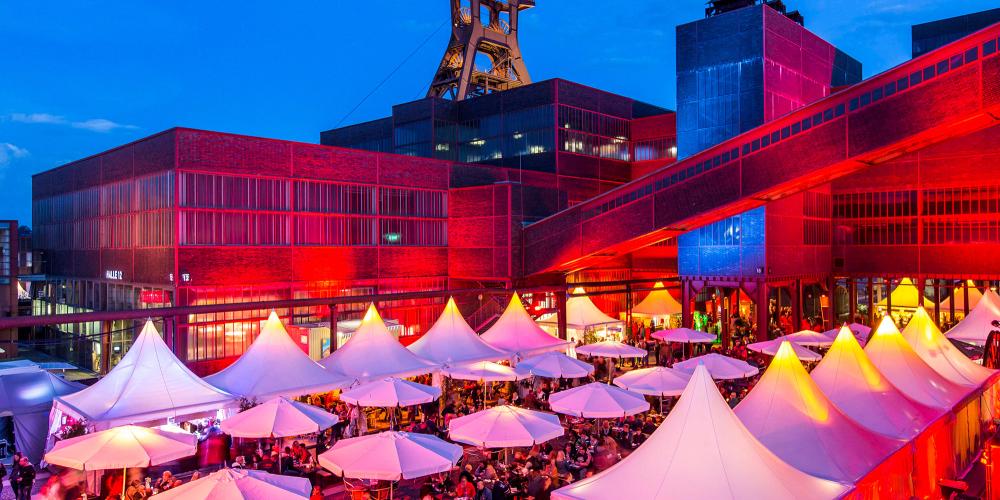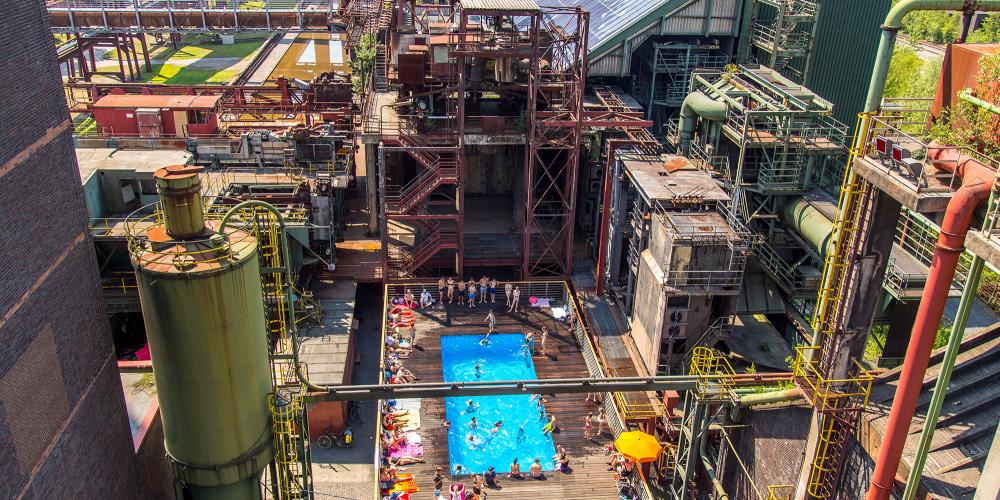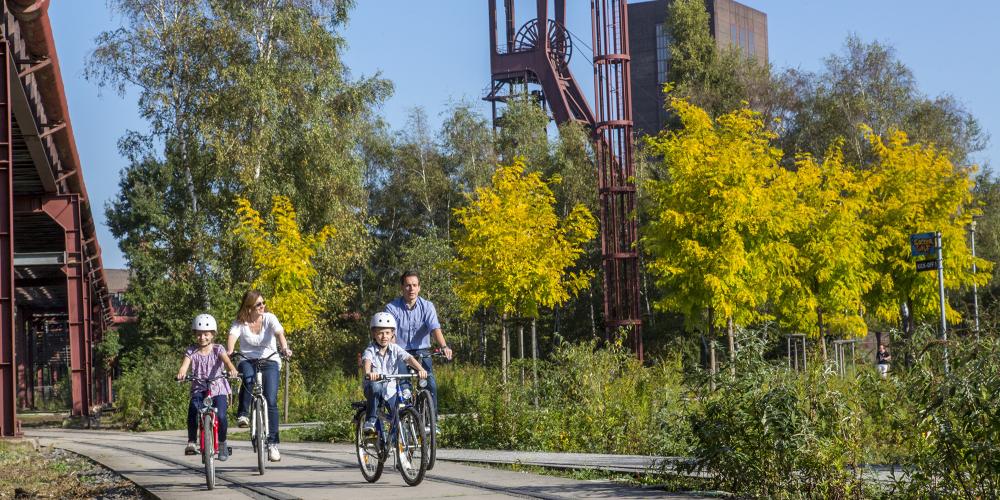Zollverein Coal Mine Industrial Complex, Germany

Zollverein was one of the world’s largest coal mines from the end of the 19th century to the early 20th century. After the First World War, the complex was completely renovated for increased output to help with Germany's rebuilding. But with the renovation, architects took an innovative approach and designed the buildings for aesthetic appeal—not just practical needs—starting an international movement.
This fascinating industrial complex represents the evolution and decline of the coal industry in Germany. At its peak, between the two World Wars, up to 8,000 miners worked day and night in the mines and the buildings above ground. The site grew to keep up with demand. After World War II, however, there was an energy shift from coal to oil and the Zollverein mine closed in 1986.
Zollverein gives you the chance to explore history and see how the site has adapted since the mine's closing. A tour through the coking plant and shafts takes people along conveyer belts and past original machinery. Outside, the beautiful winding tower of Shaft XII rises into the air with its impressive "New Objectivity" style. In other buildings, modern art galleries, exhibition halls, and restaurants have turned old spaces into recreational and cultural areas. With a swimming pool and an ice skating rink, you can enjoy visiting Zollverein all year round.
A Beautiful Coal Mine
Hundreds of mines produced coal in the Ruhr area, but only one has been part of the UNESCO World Heritage since 2001. The Zollverein Coal Mine—a masterpiece of industrial architecture—was created by visionaries Fritz Schupp and Martin Kremmer. The symmetrical arrangement of buildings is as impressive today as it was at the height of production. The facilities, which were designed down to the last detail, represent a completely preserved synthesis of form and function.
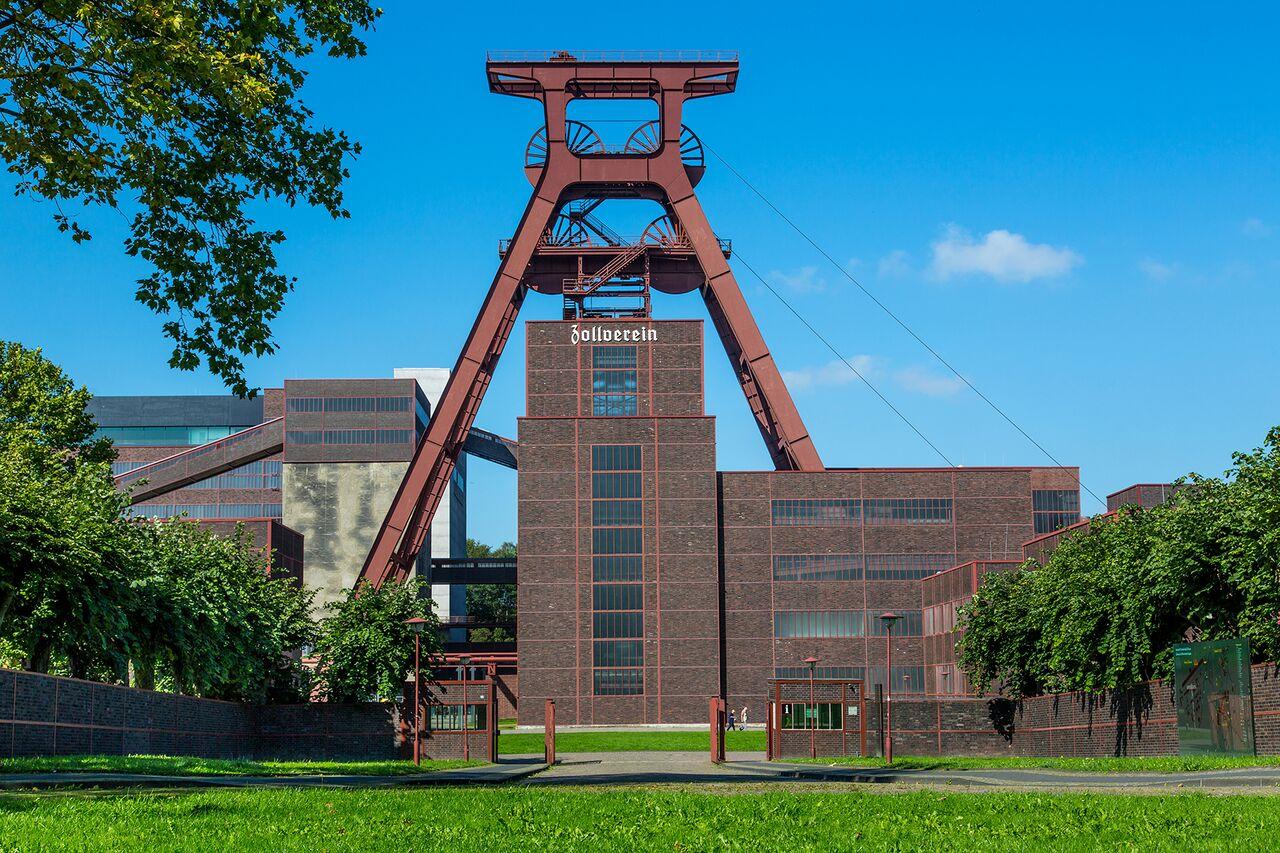
A High-Performance Industrial Complex
On February 1, 1932, when the wheels of the pit-head frame above the new shaft in Hall 12 turned for the first time, a high-performance—mostly automated—industrial complex revved into gear. A total of 240 million tons of coal were produced for more than 130 years, beginning in 1851. In all, 600,000 employees worked here until Zollverein Coal Mine closed in 1986.
The Zollverein Coking Plant, built between 1957 and 1961 in the same architectural style as Shaft XII, went into operation on September 12, 1961, and enabled the complex to achieve superlative production capacities. Following expansion in the 1970s, 10,000 tons of coal were “baked” into 8,600 tons of coke on the “black side” in 304 ovens at 1,250 degrees Celsius every day. In peak periods, the coking plant employed 1,000 people.
The Magic of Change
Today, the industrial monument is a dynamic cultural location with museums dedicated to industrial heritage and design as well as numerous leisure activities and events. The famous twin-pithead frame represents the forward-thinking evolution of an entire region. About 1.5 million worldwide guests visit the site every year to experience the exceptional industrial architecture, to go on guided tours, visit exhibitions, celebrate festivals, and relax in the Zollverein Park.
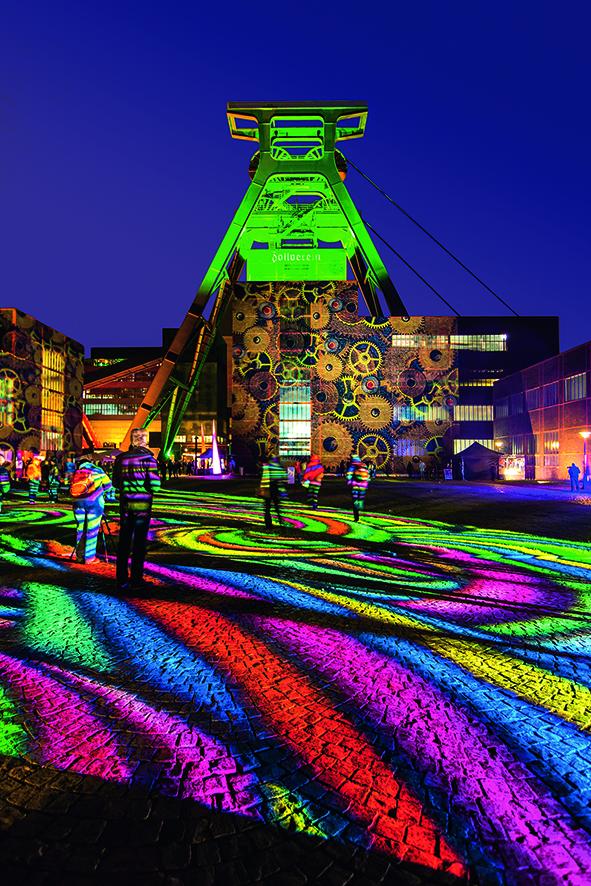
Art, Culture, and Design
Once, machine noise dictated the rhythm of the Zollverein World Heritage Site. Today, art and culture now set the tone with music, dance, theater, guided tours, and light installations. For instance, during the annual “ExtraSchicht”—the Night of Industrial Culture—the entire Ruhr area shines with hundreds of thousands of lights, turning night into day. Twice a year, Contemporary Art Ruhr (C.A.R.) gives new impetus to the artistic landscape, and the international cultural festival Ruhrtriennale brings spectacular experiences and inspiring premieres to the World Heritage Site every summer.
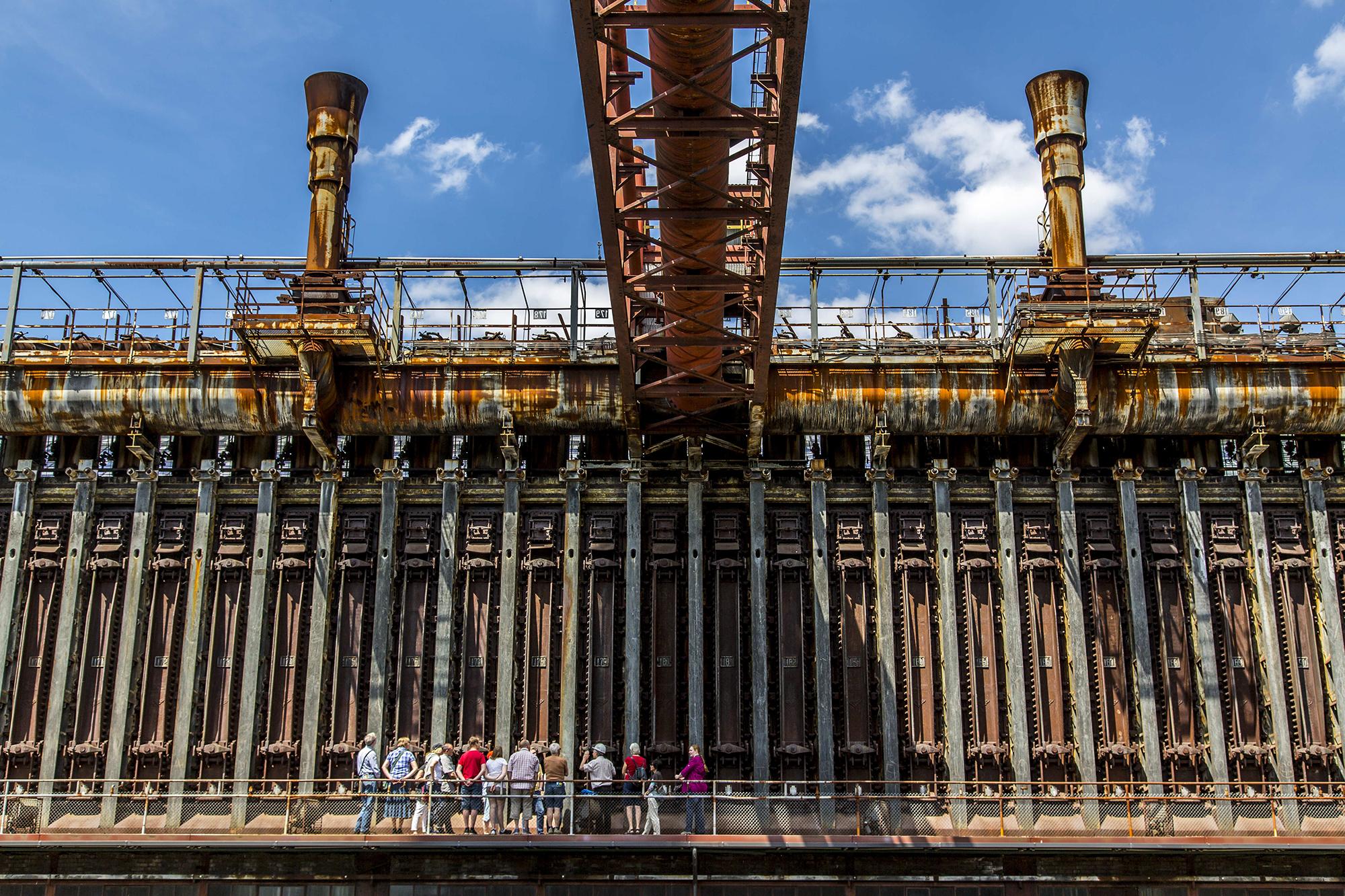
Denkmalpfad Zollverein, the “Monument Path” in English, brings industrial history back to life. On guided tours through the preserved above-ground facilities, visitors experience what it meant to work in the most efficient coal mine in the world, and Europe’s largest coking plant.
Another must-see, the Ruhr Museum in the former Coal Washery has more than 6,000 pieces and presents the exciting natural and cultural history of the region. On three levels, the permanent exhibition illustrates today's Ruhr metropolis, the pre-industrial memory, as well as the dramatic history of industrialisation and structural change in the Ruhr area.
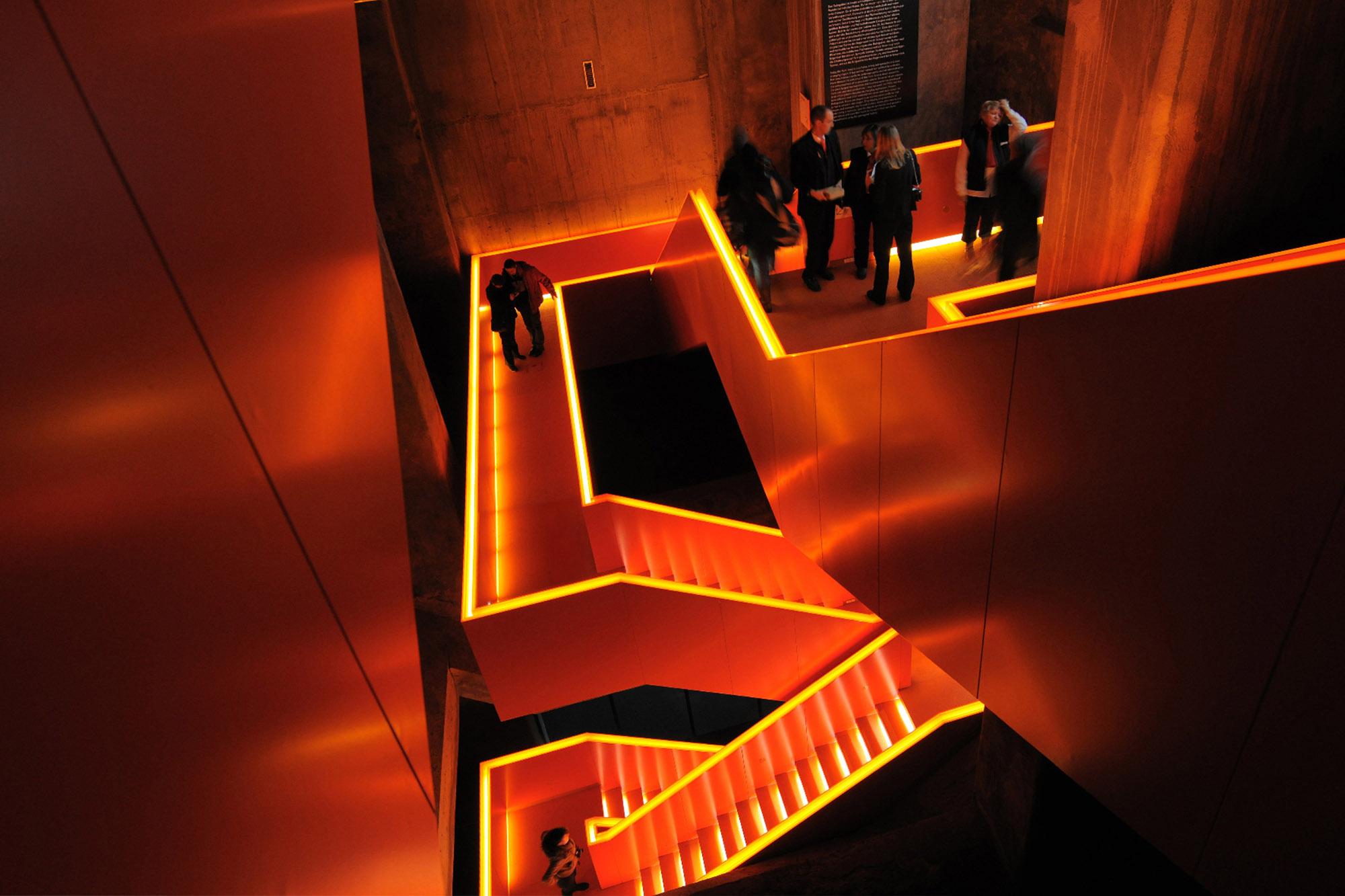
Before, during, and after one's visit, Zollverein's natural surroundings and environment are waiting to be explored—guests should take advantage of all the possibilities. While here, stroll through the densely forested and magical Zollverein Park, jump into the Works swimming pool in the summer, and, in the winter, show off skills on the Zollverein Ice Rink.
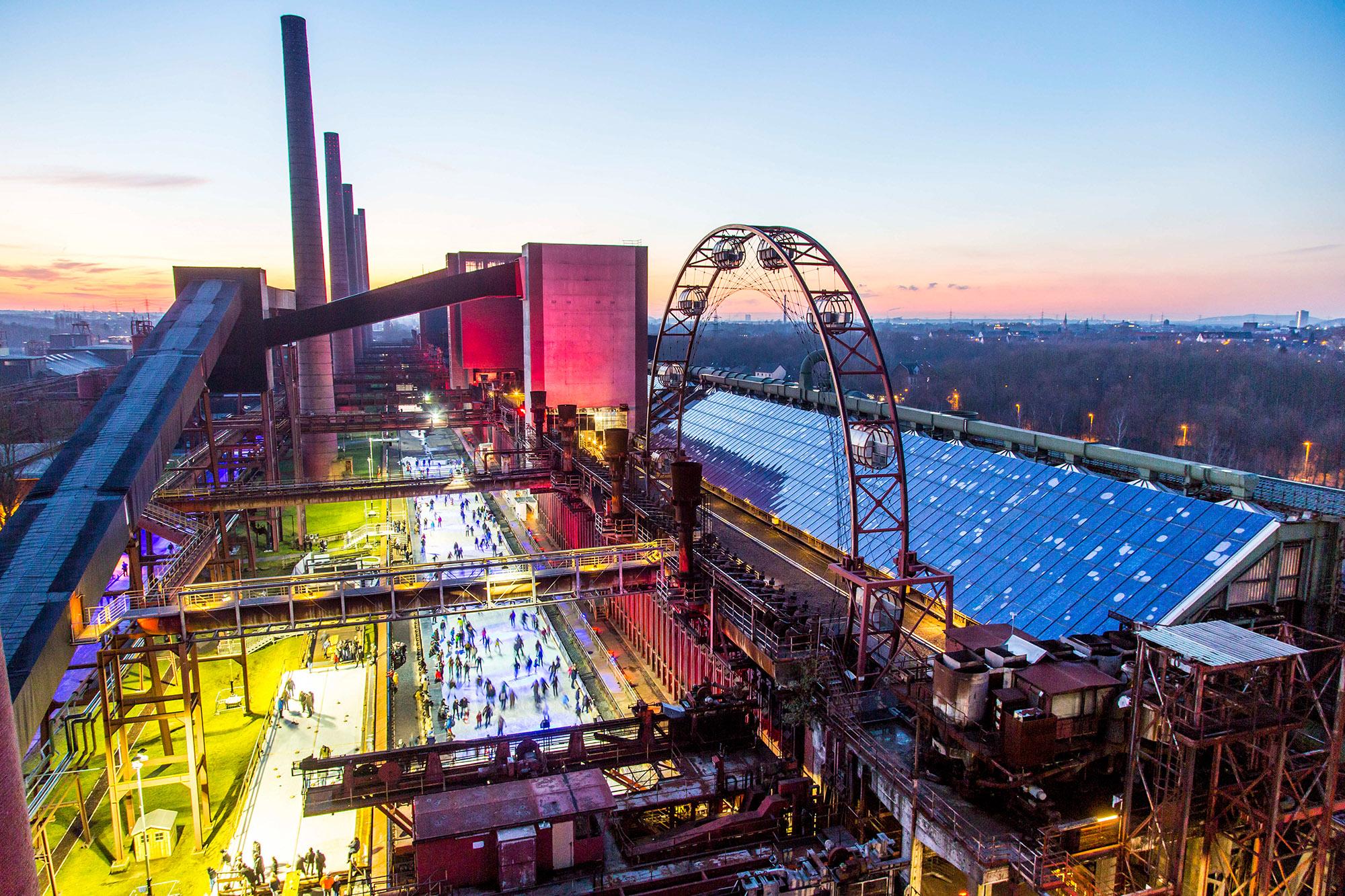
How to Get There
By plane, from Düsseldorf Airport, you can reach the UNESCO World Heritage Site Zollverein by car or public transport.
If travelling by car, enter the destination address “Fritz-Schupp-Allee” in your navigation device. From Düsseldorf, take the motorway A40 and then the Frillendorf-Süd exit. From there, follow the signs to Essen-Stoppenberg.
From the Essen main train station, take tram line 107 to the “Zollverein” stop. The travel time is approximately 15 minutes. From the main train stations in Duisburg and Dortmund, the suburban railway S2 runs every hour to the “Zollverein Nord” station.
When to Visit
Zollverein is a year-round destination. The park is freely accessible every day (except during major events), at all hours, and offers a new experience during every season. The free Works Swimming Pool is a popular venue in summer, while the Zollverein Ice Rink is the winter highlight.
During the summer months (April–October), Zollverein Monument Path provides an extended guided-tour programme. The Ruhr Museum is open daily from 10:00 to 18:00.
Please note that several visitor attractions at Zollverein are closed on December 24, 25, and 31 .
How to Visit
To explore the Zollverein World Heritage Site, allow for a whole day. The Ruhr Visitor Centre Essen at Shaft XII is your first port of call. There you get information and tickets.
If you would like to participate in a guided tour of the Monument Path, we recommend that you reserve places in advance.
After a museum visit or a guided tour, a walk through the idyllic Zollverein Park, and a trip by e-bus are pleasant options to continue your visit. On the way, you can take a break in one of the restaurants. Several shops and ateliers offer jewellery, furniture, and souvenirs.
Sights and Attractions recommended by the locals
Zollverein Coal Mine Industrial Complex, Germany
RUHR.VISITORCENTER Essen:
Daily 10:00 to 18:00
The site is freely accessible all day long; fees apply to museums and guided tours.
